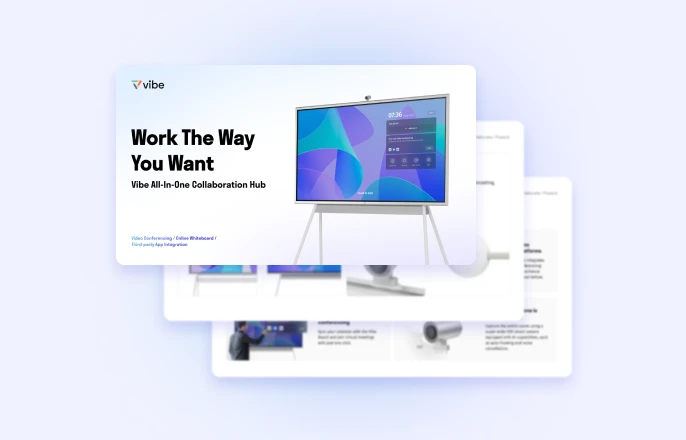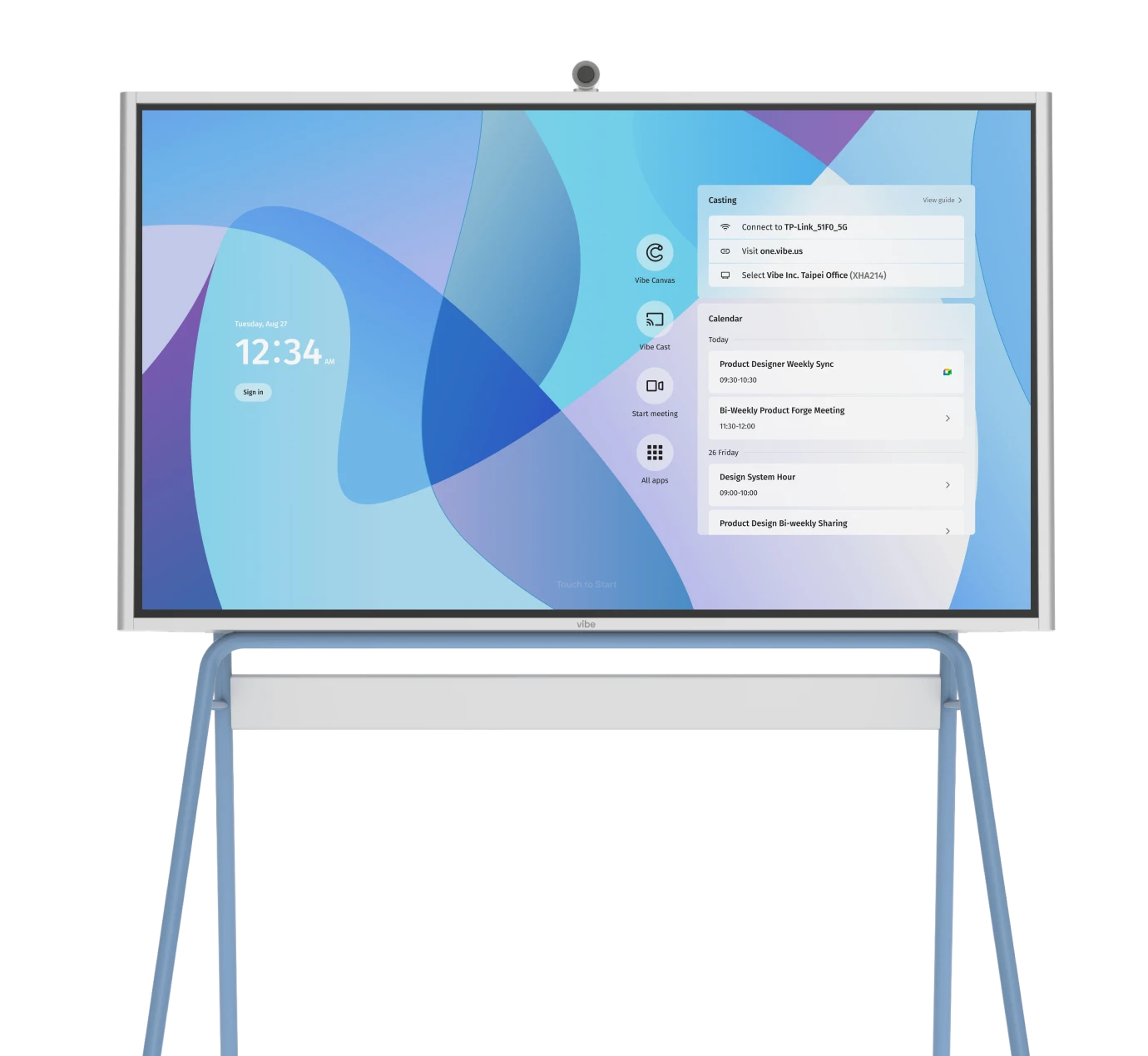We’ve all been there: You call a company with a question or a customer-service issue. After navigating a nebulous automated phone system, you are finally put on hold, waiting to speak to an actual person. After listening to repetitive hold music for 15 minutes, you are met with a rushed, unhelpful, or even rude response. How are you left feeling about that particular company?
Now imagine the opposite: You call a business and are quickly forwarded to a cheerful, calm, well-informed customer service agent who solves your issue quickly. Imagine the good feelings generated by this experience. As the saying goes, "You never get a second chance to make a first impression." The fact is, poor client-facing roles result in American businesses losing customers every day. According to PwC, 17% of US consumers will walk away from a brand after just one bad experience. Your business can benefit from optimizing all client-facing roles.
In this article, we define what ‘client-facing’ means in today’s business landscape. We then outline the most common roles associated with client-facing activities, explain why they’re essential to customer success, and share practical skills and strategies for excelling in these positions.
- Client-facing roles are the front lines of your business where repeat customers are earned
- Best practices for client-facing success include prepping before client interactions, setting clear expectations, maintaining consistent, personalized communication, using effective digital tools, managing emotional energy, and staying flexible and transparent.
- Building a company culture prioritizing client-facing success creates loyalty, trust, and customer satisfaction
What is ‘client facing’?
Client facing is the term used to describe any role or task involving direct client/customer communication and interaction. Client-facing roles focus on relationship management and service delivery.
Client-facing communication has taken many forms over the decades. Today, this may include:
-
Face-to-face interaction
-
Phone contact
-
Email
-
Live chat
-
Social media
-
App-based communication

The term client-facing applies at both the role level (a job title, for example) and skill level (communication and customer interaction responsibilities). Client-facing roles contrast with ‘back-office’ roles that don’t involve directly interfacing with clients. This distinction matters because each role requires different skill sets, training approaches, and performance metrics. While back-office roles are often focused on internal processes, systems, and efficiency, client-facing roles are more heavily focused on external client relationship management and service delivery. Client-facing roles are about developing positive relationships, the quality of which directly impacts customer retention and revenue growth.
Why client‑facing roles matter
As the business world moves further and further into automation and AI, it’s vital that leaders still prioritize hiring and training skilled, human staff for client-facing positions. These roles increase trust, improve brand perception, and build loyalty. Informed, empathetic human interaction solves problems that automation simply can’t handle.
Value drivers for client-facing roles that can’t be automated:
-
Positive first impressions equate to brand loyalty and increased revenue
-
According to Bain & Company, even a 5% increase in retention can boost profits by 25%-90%
-
Client-facing roles excel at handling escalations that require nuance
-
Direct customer feedback is vital (and valuable) for improving products and services
5 common client‑facing roles
Let’s go over five common client-facing roles and their primary duties. These roles exist in nearly every industry and department where a service- or product-oriented business is fully staffed, and each plays a different part in shaping the client experience.
1. Customer service representative
-
Core focus: Resolve inbound issues via chat, phone, or email
-
Day-to-day: Troubleshoot problems, de-escalate frustrations, log patterns for internal teams
-
Success metrics: CSAT, first-contact resolution, response time
-
Unique challenge: Maintaining empathy during high-volume, repetitive interactions
2. Sales professional
-
Core focus: Convert prospects and build healthy pipelines
-
Day-to-day: Discovery calls, demos, proposal follow-ups, objection handling
-
Success metrics: Quota attainment, conversion rate, sales cycle length
-
Unique challenge: Balancing authentic relationship-building with revenue pressure

3. Account manager/executive
-
Core focus: Nurture relationships post-sale
-
Day-to-day: Renewal planning, quarterly business reviews, proactive check-ins
-
Success metrics: Retention, NRR/expansion revenue, churn reduction
-
Unique challenge: Managing expectations across multiple stakeholders
4. Consultant/advisor
-
Core focus: Provide expert analysis and strategic guidance
-
Day-to-day: Client workshops, solution mapping, long-term implementation support
-
Success metrics: Project outcomes, client satisfaction, adoption of recommendations
-
Unique challenge: Influencing client decisions without direct authority
5. Technical support engineer
-
Core focus: Troubleshoot hardware or software issues
-
Day-to-day: Diagnose root causes, reproduce bugs, translate technical fixes for non-technical users
-
Success metrics: Time to resolution, ticket quality scores, backlog reduction
-
Unique challenge: Simplifying complex technical concepts under time pressure
Core skills & traits for client‑facing excellence
Soft skills, or the ability to successfully navigate interpersonal interactions, define the quality of client-facing roles. Familiarity with these attributes is critical for hiring, training, and daily performance, but unfortunately they aren’t innate. Certain people may come into a position with a greater inherent propensity toward client-facing success than others, but nearly anyone can build effective skills through proper training, practice, feedback, and varied client exposure.
Let’s go over some of the core skills and traits that result in success in client-facing roles.
Communication & adaptability
People in client-facing roles should facilitate clear, flexible communication across channels. They should have the ability to adjust their tone, language, and approach according to the needs of each individual client. A poor performer might simply use the same ‘script’ for each interaction, regardless of client communication method or client type. A better approach would be to adapt the approach depending on the client. Another positive example could be a salesperson or customer service specialist rephrasing technical terms for non‑expert clients.
Emotional intelligence
Client-facing roles should be staffed by people exhibiting empathy, patience, and emotional control. They should have the ability to read a client’s mood and respond appropriately. Better performers, when met with a frustrated or upset client, will validate the frustration, offer genuine empathy, and suggest effective next steps to resolve any concerns. An example of what not to do in this situation would be reacting defensively, becoming sarcastic, or interrupting clients who are upset.
Problem-solving & technical competency
Top performers in these roles will be trained to diagnose, troubleshoot, and resolve issues efficiently. They will seek to obtain all necessary information and combine creative thinking with deep product knowledge. An effective leader here might ask probing questions during a client presentation or interaction to enable building a quick workaround before escalation. A poor performer might simply guess answers to any concerns without confirming facts or gaining enough information from the client. A generic, one-size-fits-all answer to every client’s problem is not the way to go.
Relationship management
Employees in client-facing roles should strive to build client trust over time and follow through with commitments and suggestions. They will personalize touchpoints, showing genuine concern and care in each interaction. For example, sending tailored resources after a discovery call demonstrates that you are committed and interested in the relationship. Poorer performers might only reach out during an account renewal or sales pitch and use boilerplate language for client interactions.

Best practices & strategies for client‑facing success
So, what are the best practices for client-facing role success? Let’s go over some strategies and methods known to improve client experience and optimize team performance. Consistency in these areas builds trust and efficiency, both within teams and between businesses and clients. Follow these actionable tips:
-
Prep before each client interaction: Become very familiar with the client’s history, goals, and any past issues. Set an agenda for each interaction and work hard to stay focused.
-
Set clear expectation: In each client-facing interaction or sales presentation, define the scope, timelines, and next steps up front. This prevents misalignment and client disappointment later.
-
Follow up with notes: Summarize key takeaways and action items after meetings, and send these to both the client and client-facing team supervisors. This reinforces clarity and accountability.
-
Personalize communication: Reference client-specific details to show attention and concern. This helps build a stronger rapport.
-
Confirm understanding: Recap next steps at the end of each interaction. This ensures alignment and avoids rework.
-
Use digital tools: CRMs, shared docs, and collaboration boards help track progress. This also makes workflows transparent and keeps both client and business updated.
-
Ask for feedback: Regularly request input and be sure to act on it. This signals respect for the client and commitment to improvement.
-
Manage emotional energy: Client-facing work can be draining, for both employee and client. Use micro-breaks, debriefs, and clear availability boundaries to stay resilient and positive.
Challenges in client‑facing work & how to overcome them
There’s a reason why some people prefer ‘back-office’ roles. Client-facing positions can be rewarding, but they also come with high emotional and operational demands. These four core challenges impact both employee retention and customer success, and addressing them proactively is key..
Emotional burnout & compassion fatigue
Burnout can be caused by constant emotional labor, conflict management, and high-pressure client interactions. It’s often hard to show compassion to high-demand clients who may have unrealistic demands. This is often worsened by a lack of appropriate recovery time or unclear escalation paths for resolving issues. Some fixes may include:
-
Schedule micro-breaks between intense calls
-
Rotate high-stress responsibilities among team members
-
Offer employee mental health resources and normalize peer debriefs
-
Create clear escalation workflows to reduce individual pressure during client engagement
Misaligned expectations & scope creep
This can happen when clients expect deliverables outside of the agreed scope or timeline. It often results from vague onboarding, shifting priorities, or poor documentation. Possible fixes include:
-
Define and document the scope clearly at the start
-
Review expectations during kickoff and major milestones
-
Use formal change request processes for extra work
-
Train teams to communicate boundaries confidently and stick to them
Communication breakdown
Misunderstandings can occur due to differences in working platforms, time zones, or cultural norms. They are often caused by unclear tone, lack of appropriate context, or scattered messages. To fix these issues, you should:
-
Establish preferred channels and communication norms early
-
Use concise, jargon-free language—especially with international clients
-
Clearly summarize key points and next steps in follow-ups
-
Stay fully present in live conversations—avoid multitasking or distractions
Internal-external misalignment
This can happen when internal teams and/or client representatives are not aligned on what was promised or expected. Misalignment leads to frustration for both clients and frontline staff. Fixes include:
-
Sync internally before major client calls
-
Use shared briefs to align sales, product, and delivery
-
Foster cross-functional communication and accountability
-
Encourage client-facing staff to escalate gaps early

Measuring success in client‑facing roles
It’s useful to use proven KPIs to evaluate individual and team performance in client-facing roles. These measures balance speed and satisfaction to get a more complete picture of impact. It’s important to avoid over-indexing on efficiency metrics (speed) at the expense of quality metrics (satisfaction, resolution quality). The fastest response may simply create more work if it doesn’t actually solve the problem. Consider using some (or all) of the following metrics as appropriate:
-
CSAT (Customer Satisfaction Score): Shows how clients rate specific interactions
-
NPS (Net Promoter Score): Measures client loyalty and referral likelihood
-
First response time: Indicates how quickly a client is acknowledged
-
Time to resolution: Reflects how efficiently issues are solved
-
Retention rate: Tracks long-term satisfaction and value
-
Churn rate: Flags dissatisfaction or service issues
-
Revenue from upsell/cross-sell: Shows relationship value, depth, and trust
-
Call or ticket quality reviews: Checks consistency, tone, and compliance
Building a client‑facing culture in your organization
A client-facing culture supports and sustains success in these vital roles. However, today’s clients might develop unrealistic expectations or even engage in abusive behavior with staff. Remember: Client-first doesn’t mean client-always-right. To protect your team from abuse, establish clear policies for handling difficult clients, set boundaries, and empower staff to escalate or disengage when interactions become harmful.
Ways to build a positive, client-facing culture:
-
Hire by prioritizing attitude and soft skills, not just experience
-
Train teams with role-plays, presentation tips, and real scenario simulations
-
Reward top performers based on customer feedback
-
Encourage inter-team communication (sales, support, product)
-
Create positive company rituals around client wins and testimonials
-
Foster mentorship between senior and junior client-facing staff
Vibe Board S1: Simplifying client-facing excellence
The right technology can be the difference between a good client interaction and a great one. When your team is managing multiple stakeholders across different time zones, clarity and visual communication become essential—not optional.
This is where tools like the Vibe Board S1 transform client-facing excellence from a soft skill into a systematic advantage. During client presentations and workshops, teams can collaborate in real-time on a Vibe Canvas, capturing ideas as they flow rather than scrambling to take notes afterward. Integration with Zoom, Miro, and Google Meet means your tech stack works together instead of creating friction.
For distributed teams especially, features like AI cameras and cloud-based saving ensure nothing gets lost between meetings—every whiteboard session, annotation, and action item is preserved and accessible. This means account managers can reference previous conversations with precision, consultants can build on workshop outputs seamlessly, and technical support engineers can walk clients through solutions visually.
The result? Clients feel heard, understood, and confident in your team’s ability to deliver. See how Vibe supports client-facing teams → Request a demo
Watch the video to see how Vibe Board transformed the client acquisition process with visual collaboration:
Client facing FAQs
What is the meaning of client facing?
It refers to roles or activities where employees directly interact with customers or clients, representing the company and delivering support or service.
What is another word for client facing?
Other terms include customer-facing, public-facing, or external-facing, depending on the context.
What is an example of a customer-facing role?
Salespeople, account managers, consultants, and customer service agents are all examples.
How do you succeed in a client-facing position?
Combine strong communication, empathy, and proactive problem-solving with clear processes and consistent follow-ups.









-1sbltxxq4FYxHrXrwJVLsCDNsXpqNa.webp)
-5Zp0pmSytvcuYDVs1LvuwplKuRneK0.webp)
